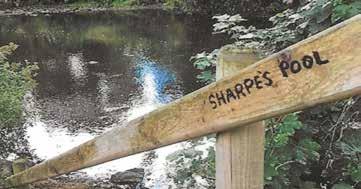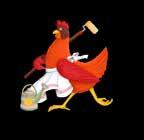






























The clocks have changed and I can’t tell you how much happier I am!! I can’t be the only one? And can someone remind me why we send them back in the first place? As I understand it, it was originally something to do with when we were a country of production and we had farms & mills etc. I am also aware that we had a trial year, where we didn’t change the clocks back in the 60’s/70’s?? and those particular people, at that snapshot in time, didn’t like it –not sure what the reason was, with not being born and all!! So I suppose what my question really is, assuming all this is correct, is it time for a review?! Things have moved on so much as a society and I wouldn’t mind my snapshot in time, two penneth vote please! I mean, we aren’t trees, so why don’t we review things that would make our lives a little easier more regularly. Imagine a December where it isn’t dark at 3pm! Anyways, that’s my soap box for this month….

I have these little chats with you every month because I think some of you might have read my little message (which always surprises me to be honest – ramblings of a mad woman and all that). The reason I know you must have read it last month is because we had a couple of lovely emails and calls, praising both, our little magazines (not so little, there are 11 mags with over 500 pages, delivered to over 60,000 homes currently - eeeekkk) and more importantly, a lovely bit of feedback for one of our distributors. I won’t embarrass her but the lady in question
contacted us to tell us how polite, respectful & well-presented he was and that he was a credit to the magazines. Without our distribution team, we wouldn’t be able to do what we do, so we obviously passed this straight onto the distributor in question and this random act that took this kind lady 5mins to do, really truly made at least 5 people smile and walk with a spring in their step for the day. I ask myself, why wouldn’t you want to be more like that?!
In other news, we are finally launching our longawaited Matlock magazine! It’s never easy to launch new mags, particularly during turbulent times but we are doing such exciting things this year with our features (more to come) and we’re getting such great feedback. We have had quite a few requests for this magazine……. so here we are, working round the clock again, excited to bring you even more fantastic local businesses and information!

See you next month for our Coronation special!
Do you love to settle down with a novel and escape into a different world, a different reality?


One of my not so guilty pleasures, is to snuggle under a blanket with a cup of tea and a pack of biscuits - M&S almond thins if I’m feeling flush, or Aldi gingernuts if I’m feeling the pinch - and lose myself in a really great book.
It’s something I’ve done since childhood, and yet I don’t do it as much now as I used to. Somehow it is easier to switch the TV on, it’s less strain on the aging eyes, AND brain! TV is the equivalent of a comic book; it takes less brain power to follow pictures than read words on a page. If I’m honest, I am cross at myself for not spending more time reading - I am after all a writer and my craft is as much formed by the words I consume as the words I create.
Looking at a wider perspective, it seems that many younger people have lost - if indeed they ever had - the ability to enjoy reading.
With concentration spans apparently shrinking to an average of 8.25 seconds for an adult (although research is split on this) it isn’t hard to understand why committing to reading an 80,000 word novel may be too daunting for some. And that makes me sad.
There is so much to be gained by reading a book and absorbing the story as the author created it, not the way it was adapted for TV or film. I mean, how often do you hear people saying, “oh the film is SO much better than the book”? I would wager never. It is however common to hear the reverse. I suppose the exception to this adage is a certain series of “housewife porn” novels which were translated to the big screen - I’m sure you know the ones I mean!
With World Book Night heading our way on April 23rd, perhaps it is time to sort out some reading material and reaffirm a love of books. Even better, why not make a concerted effort to encourage younger readers to spend more time in the printed, rather than online world?

A small publishing house I work with has just published two books written by a four year old, and they are incredible. Proof to me that if we imbue our children with a love of the written word from the very beginning, they will continue to be readers…and maybe even authors! My own grandson has been surrounded by books since he was born, and now, at the age of 20 months, he can already recognise his name, letters, colours, and numbers.
These articles are researched and written by Laura Billingham, a local content writer and author. Laura moved to the Peak District several years ago to pursue her passion for writing. To find out more visit www.landgassociates.co.uk or contact Laura on 07736 351 341
Don’t forget to mention Voice Magazines when responding to the Ads
Are you a reader - I mean other than this magazine, which you are obviously reading right now, or you wouldn’t have seen the question





Enjoy your next family holiday with a stay at the delightful Little Red Hen House. An elegant and cosy holiday home just a 7 minute drive from award-winning and dog-friendly Warkworth beach.
✽ 2 spacious en-suite bedrooms


✽ A fully enclosed garden

✽ 3 small to medium dogs welcome upon request
✽ Fully equipped kitchen including an American style fridge freezer
✽ Perfect for exploring the stunning Northumbrian Heritage Coastline

✽ Walking distance to a range of dog friendly pubs, cafes and restaurants

✽ We have fast fibre Wi-Fi and smart TV’s
Search ‘The Little Red Hen House’ at:












As part of our reminiscence sessions, at this time of year we like to celebrate Spring and some of the traditions from the past. Simnel cake being one of them.


It is a light fruit cake with a layer of marzipan on the top and eleven marzipan balls to represent the number of apostles minus Judas. At least that is what I made. I was told in no uncertain terms by several ladies that my recipe was wrong and it should have a layer of marzipan running through the middle as well as on the top. That was me told.
There are many theories about the origin of the cake. The consensus is that during medieval times, it was a yeasted bread made with fine white flour. During the 17th and 18th centuries, the recipe had changed into a fruited, spiced batter pudding which was boiled then wrapped in pastry, rather like the Scottish black bun.
By the 20th century, a cake with marzipan was established with disciples for decoration and the top then toasted. Regional variations have some towns boiling then baking the cake, some with a pastry crust made to look like a crown. Regardless of the differences, a Simnel cake is conventionally eaten at Easter time.
Although it has fallen out of favour, the Simnel cake makes a colourful, symbolic and historic addition to Springtime celebrations. So, whether you celebrate Easter or not, let’s make some room in between the myriad of hot cross buns and chocolate eggs, and indulge in a little slice of history.
Janet and Paul Barrass are All Around the Shire. Find us on or email:

for more information. Janet



















Most will have heard of the Women’s Land Army but few have ever heard about the boatwomen’s training scheme that was an initiative in the United Kingdom during the Second world war to attract women to work on Britain’s canal network. Initiated by the Grand Union Canal Carrying Company (GUCCC) in 1942 the scheme was taken over by the Ministry of War Transport in 1944. The scheme closed after the end of hostilities in 1945.

Nicknamed the Idle Women due to the Inland Waterways badge they wore in lieu of a uniform, it is estimated that approximately 100 women joined the scheme but only about 45 completed the training and only six are recorded as having participated throughout the length of the scheme. In the early part of the Second world war Britain’s canals suffered from a labour shortage, caused mostly by military service (although until 1942 being a waterways boatmen was a reserved occupation) and the higher wages available in other employment. A recruiting drive in 1941 did attract some men to the waterways but the GUCCC noted that they also received 47 applications from women, offers they refused stating that unless the women were members of boating families already employed on the canal, their services could not be utilised.
Late in 1941, the Ministry of War Transport wrote to boaters Daphne March and Frances Traill who had been using March’s own boat, Heather Bell, to transport cargo since 1940 to see if the pair would work with the GUCCC to train women to work the boats. March and
Traill agreed and brought in Eily “Kit” Gayford to help. The GUCCC was one of two companies the ministry had approached and while the GUCCC has responded positively the other company, the Severn and Canal Carrying Company declined the opportunity stating that “to work canal boats by female labour entirely was not a practical proposition.”
During their training each woman was paid £2 per week rising to a minimum of £3 per week once qualified. The actual amount depended on the earnings of the boat based on tonnage carried split between the three women crew members. No uniform was provided, the GUCCC provided a list of items needed but the women had to provide this themselves. The only indication of their status was a National Service badge with IW for Inland Waterways on it. It was this IW badge that led to the women being called Idle Women by boatmen but the nickname stuck and the women proudly adopted it. Once qualified unpaid leave of 3 to 6 days was allowed after every second trip. No additional rations were provided, in contrast to other national service organisations such as the Women’s Land Army but arrangements were made for the women to be able to use their ration books at any shop rather than being tied to shops in a particular location.

Working seven days a week and often for 18–20 hours a day the work was considered hard and arduous by most of the women.

Work on the Grand Union canal continued until after VJ day but shortly after the women found that there was no further work for them and they were unemployed and free to go. It is estimated that at its peak 45 women were working on the Grand Union canal crewing between 15–30 boats.

In response to International Women’s Day here is a story that is perhaps unheard of to many people.
Supply
Supply










1. Cook the noodles following the pack instructions, then drain and cover to keep them warm.
2. At the same time, spray a non-stick wok or large frying pan with low-calorie cooking spray and put it over a high heat. Working in batches, stir-fry the beef for 1-2 minutes or until browned, then tip into a bowl and cover to keep warm.
3. Spray the wok with more low-calorie cooking spray and stir-fry the garlic and chilli flakes for 1 minute.
For more information visit www.slimmingworld.co.uk

Quick? Fresh? Tasty? Healthy? And filling? Check, check, check, check & check!
Stir in the paprika, passata, soy sauce and sweetener and cook until heated through. Return the beef to the wok and keep warm over a low heat.
4. Spray another non-stick wok or large frying pan with low-calorie cooking spray and stir-fry the veg over a high heat for 5 minutes or until tender.
5. Divide the noodles, veg and beef between shallow bowls and spoon over any sauce left in the wok to serve.
Serves: 4
Ready in: 20 mins
Ingredients:
• 4 dried noodle nests
• Low-calorie cooking spray
• 400g lean thin-cut beef steaks, visible fat removed, cut into thin strips
• 2 garlic cloves, sliced
• ½-1 tsp dried chilli flakes, to taste
• 1 tsp paprika
• 500g passata
• 2 tbsp soy sauce
• 1 level tsp sweetener granules
• Large bag of mixed stir-fry vegetables

Syns per serving: FREE















COFFEE SHOP
OPENING TIMES
TUES - SAT 10AM - 4PM




LAST FOOD ORDER 3PM

HOMEMADE CAKES

HOT & COLD FOOD SERVED
0114 235 0092
HATHERSAGE RD, SHEFFIELD S17 3DQ

Matlock Garden Centre is situated in the village of Tansley surrounded by the beautiful Peak District countryside. The local area has a fascinating historical and cultural heritage. The centre is a welcoming stop off point between enjoying the areas stunning scenery, market towns and picturesque villages.
To enter simply email the answer to the question to community@voicemagazines. co.uk with the title ‘Matlock Garden Centre Competition’ including your name, telephone number and address.


Closing date 28th April 23.
07494 751 204
Cakes inspired by & based in the beautiful Peak DistrictWelcome to The Butcher at White’s, Calver. Situated in the picturesque village of Calver, a village of outstanding beauty and right in the heart of the National Peak District. We are a fully independent Butcher serving the local and extended community. Where possible, we use locally sourced meat working closely together with local supplier ‘Baslow Beef’ to ensure that we stay authentic to our trait of being ‘the local butcher’. We boast an extensive range of meat products including beef, venison, chicken, lamb and more whilst also offering a fresh fish range. Our team here at The Butcher are extremely customer focussed and driven to provide the best customer service for all things meat related. Neil, our in-store butcher has over 30 years’ experience in the industry specifically working within the Chatsworth, Bakewell and surrounding Peak District area.
Working alongside Neil is Jess, our apprentice Butcher. Collectively they work tirelessly to ensure that our Butcher’s counter is always stocked with the best of the best.
From fine cuts of meat for that special occasion to more creative dishes such as beef chilli bombs and lamb pin wheels. There is always something new on the counter and ready prepped options. So, whether you are planning a BBQ, making a Sunday roast for the whole family, need a quick option for dinner, want a specific cut of meat or need to cater for an event, The Butcher is the place to come to. The Butcher team are in store Tuesday - Saturday each week, whilst The Butcher’s counter is always available during shop opening hours.










Located within White’s shop, our vision here is to create the one stop place for all of your grocery convenience needs.













































Lessons in Chemistry by Bonnie Garmus is such good fun. It makes you feel good about life and reminds you what is best about being a human being who stays true to themselves.
It’s set in the 1960s, a time when women’s lib was slowly starting to emerge from the kitchen and the typing pool, although the idea that a woman could be a chemist was enough to shock society to its core.

But chemist Elizabeth Zott is not your average woman. As she would have pointed out, there is no such thing. However she works with an all-male research team with a decidedly antediluvian approach to equality.



No future there, so exit Elizabeth, pursued by the need to earn a crust. Bizarrely, out of desperation, she accepts a job hosting a minor channel TV cooking show aimed at the bored housewife. But Zott doesn’t do boring. Her scientific and straightforward approach soon wins her an avid army of female viewers and her fame grows. A step along the road to revolution one scientific formula at a time.
Elizabeth is an irresistibly wonderful hero. She isn’t going to be limited by other people’s hang-ups. She doesn’t fit the mould and she sees no reason to change that.
This book is funny and generous and joyful. It’s Bonnie Garmus’ first book. I hope she writes another one fast.












Across
5 Bishop’s parking spot, understand? (3)
7 Hue’s partner is part encrypted (3)
10 Font-style antennae, say? (7)

14 Swop player on way back to the lane (3)
15 In the evening, she ate discerning fruit! (3)
Down
2 Discount outside, as far as can be seen inside (4)
3 Long ago, you held back the technique (4)
9 Plot end at the disco? (5)

12 Novello’s a bit herbivorous (4)
13 Ripping sound is good for container weight (4)

5

Pitcherwits® are crossword puzzles where some of the clues are in pictures. Sound easy? It’s not called “Pit-your-wits” for nothing! The mixture of cryptic and picture clues, combined with Professor Rebus’ unique sense of humour, will keep you entertained for hours. This


















From January onwards, the signs of spring have been in the air and all around us. The days are getting longer and warmer, and the nights shorter. The first snowdrops were out in midJanuary and since then, in both garden and in wilder places, other flowers have followed.
Celandine and coltsfoot being two of the earlier flowers to come through along with hazel catkins coming into bloom. Willow catkins also burst into life and woodland edge and smaller copses are full of early birdsong from blue tits and great tits in particular, but with blackbirds, mistle thrushes, and song thrushes joining in. In woodlands and hedgerows, there are early bursts of song from blackcaps, chiffchaffs, and from the finches such as chaffinch and greenfinch. In ancient woodlands, the great spotted woodpeckers and nuthatches announce their presence from the upper canopies of larger trees whilst treecreepers sing a high-pitched sibilant song and then creep mouselike up the bark of bigger oak trees. The persistent loud calls of nuthatches ring out across woodlands and old parks like Chatsworth or Haddon, where veteran trees provide excellent habitat.
Along bigger streams and lower-lying rivers, pied wagtails and grey wagtails have established breeding territories, and nearby, a Peak District special, the dipper produces its rattling song. The dippers fly up and downstream setting out and defending territories along the linear watercourses. Each territory ends abruptly as the neighbour’s patch starts, and the birds stop, sing and bob, and then
head back along their own stretch. The patch is marked out by good rocks or tree roots and stumps serving as song-posts. Dippers sing whilst bobbing to show off their white bib, whilst every so often dropping into the stream and going underwater to feed on small invertebrates. The aptly-named dipper both bobs and dips.
On sunny days in woodlands and in local gardens, early butterflies emerge and display along glades and rides. Green-veined white, orange-tip, peacock, small tortoiseshell, and brimstone are all species out and about early in the year. The food plants of these species are important and dame’s violet, garlic mustard, and honesty are irresistible to orange-tips and green-veined white butterflies for feeding on flowers and egg-laying. Other nectarfeeding and pollen-feeding insects are also active on warmer days with bumblebees, honeybees, and hoverflies for instance, all in search of flowers on which to feed. In the wildlife garden, part of the plan is to ensure a good supply of suitable flowers and mini-habitats to draw in and support these species. Spring is hopefully the season to enjoy the fruits of planning and construction work from the previous autumn. Indeed, flowers like honesty are great for the wildlife garden but being biennials it is a two-year project to bring them to flowering. As temperatures continue to rise, then wildlife and flowers of late spring and early summer will also be joining the early spring activity. Migrant birds will soon arrive to compete with local residents for territories, and this is reflected by the growing dawn chorus and evening chorus rising to a crescendo across the area.
With over 20 years’ experience in designing, manufacturing and installing bespoke garden buildings throughout the UK, you can trust that Cabin Master will deliver the perfect space for your garden. And the possibilites are endless...



• Garden Bar
• Home Gym

• Office Space

• Family Room
• Arctic Cabins BBQ Huts
• Hot Tub and Swim Spas
Lawns should be starting to grow. If you do want to mow, put the cutters on the highest cut so you don’t damage growing shoots.


It’s also tempting to think about reseeding or laying patches where your lawn has got worn and bare over winter, but make sure the weather is starting to warm up otherwise you may be wasting your seed and effort - germination needs a bit of warmth in the soil.
Sweet peas can be planted outside now, three to each support. Field seeds such as cornflowers and poppies can also be sown, as can sunflower seeds, although the latter are susceptible to slugs so it may be worth growing in pots and transplanting them.
If you’re turning the compost ready for use make sure there’s no frogs or hedgehogs still hibernating there before you stick the spade in. If you think you have hedgehogs in the garden, try to encourage them –they’re great slug snafflers. They appreciate an offering of wet dog or catfood and kitten biscuits.
Nurseries may be full of tender bedding plants but it’s too early to risk them outside, so unless you have warm cover for them, resist.















